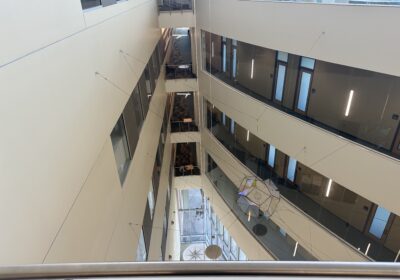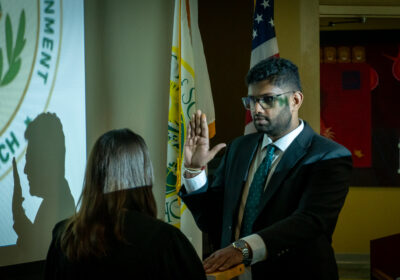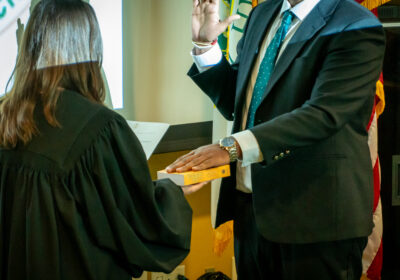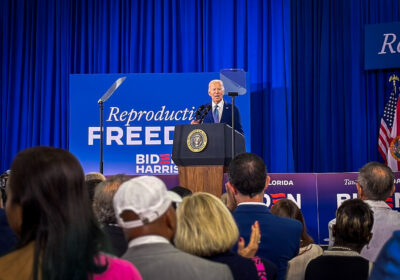Improvements taking shape
Upcoming improvements to the “outdated” athletic fields on campus may help USF recruit more student athletes, said Executive Associate Athletic Director Bill McGillis.
The $24 million construction project, “USF Athletic Facilities Project, 579,” will include improvements and new facilities for basketball, baseball, softball, football and intramural sports, according to a bid on the Florida Administrative Weekly, a Web site that houses construction project reports.
“We’re always going to find opportunities to provide our student athletes the best facilities possible,” McGillis said. “Facilities to train in, compete in, and the best facilities for us to recruit prospective student athletes that are of a high caliber.”
These renovations are part of a “master plan of athletics facilities” approved by the USF Board of Trustees (BOT) approximately five years ago, McGillis said.
The BOT will review the renovation plans in December, McGillis said. Subject to the BOT’s approval, construction will begin in the spring.
Renovations are being financed by private fundraising campaigns and the existing Athletics budget, which is the second lowest among Bowl Championship Series (BCS) schools, McGillis said. He said Athletics has enough funding to start the projects.
No funding will come from student fees, he said. USF Athletics hired design and construction company R.R. Simmons, which is also working on the project with the design company Populus, McGillis said.
R.R. Simmons is the same company that constructed the Athletics office facility four years ago.
This project is expected to be completed sometime between late fall 2010 and summer 2011, McGillis said.
The basketball practice facility will house two practice gyms and “team support facilities,” which will include locker rooms, offices, meeting rooms, athletic training, strength training and equipment management facilities, according to the bid.
“From a recruiting perspective, it’s very important that we have a basketball facility. Our basketball facilities are, if not the poorest, among the poorest in the Big East Conference,” McGillis said. “They’re very outdated and limited in space and puts us at a tremendous disadvantage in recruiting.”
The Sun Dome’s only court creates practice limitations for the basketball teams, McGillis said. The basketball facility will either be connected to the Sun Dome through a hallway, or it will stand on its own.
“We schedule lots of concerts, shows and events in (the Sun Dome), which means that the basketball teams might get bumped out and have to go to the recreation center that the students use,” McGillis said.
USF would like to generate a lot more revenue by renting out the Sun Dome, and a new basketball facility would free it up for that purpose, he said. The new facility will be shared by the men’s and women’s basketball teams and will give each team its own gym and amenities, McGillis said.
This would alleviate scheduling conflicts between the teams, as well as allow the University to rent out the Sun Dome for more money-making events, McGillis said.
Athletics is planning to bulk up its spring sports facilities, too.
New baseball and softball stadiums will be equipped with a natural grass sports field, new dugouts, bullpens, covered batting cages and a press box with an elevated and shaded entertainment or hospitality deck, according to the bid.
The baseball’s grandstand will seat 1,500 and the softball stadium will seat 700. The baseball stadium will also have two party pavilion canopies, according to the bid.
McGillis said the softball team could experience a few conflicts during renovations, but arrangements have been made to move this season’s softball games to a facility in Clearwater if the architects deem it necessary.
“It’s extraordinary what Ken Eriksen, our softball coach, and our softball players have been able to achieve in a softball facility that is similar to a high school facility,” he said. “Both (softball and baseball) facilities put us at a serious disadvantage in recruiting Division I athletes.”
The football renovations will include a lighted synthetic turf practice field, two natural grass lighted sports fields and a service building enclosed by a security and privacy fence, according to the bid.
The existing recreational fields on campus will be relocated, which will include the complete rebuilding of the fields and related improvements.
Pending the availability of additional funds, a new soccer stadium may be added to the list of projects, McGillis said. It would allow the existing facility, which was renovated last year, to accommodate strictly track and field, he said.
“The (existing) facility works well for soccer, but if we’re able to build and fund a soccer-only stadium, then that’s what we’re going to try to do … If that’s our home for soccer for several more years, then it’s a quality facility and we’ll be just fine,” he said.
Last year, the University spent around $3 million on renovations to the soccer stadium and track, McGillis said.
McGillis said in the future, a second phase of the renovation project will include the relocation of the USF Tennis Courts located by Holly Drive and Maple Drive to an area by 50th Street and Fowler Avenue.
“We’ve been working for several years to make this happen, and we’re getting closer,” he said.






